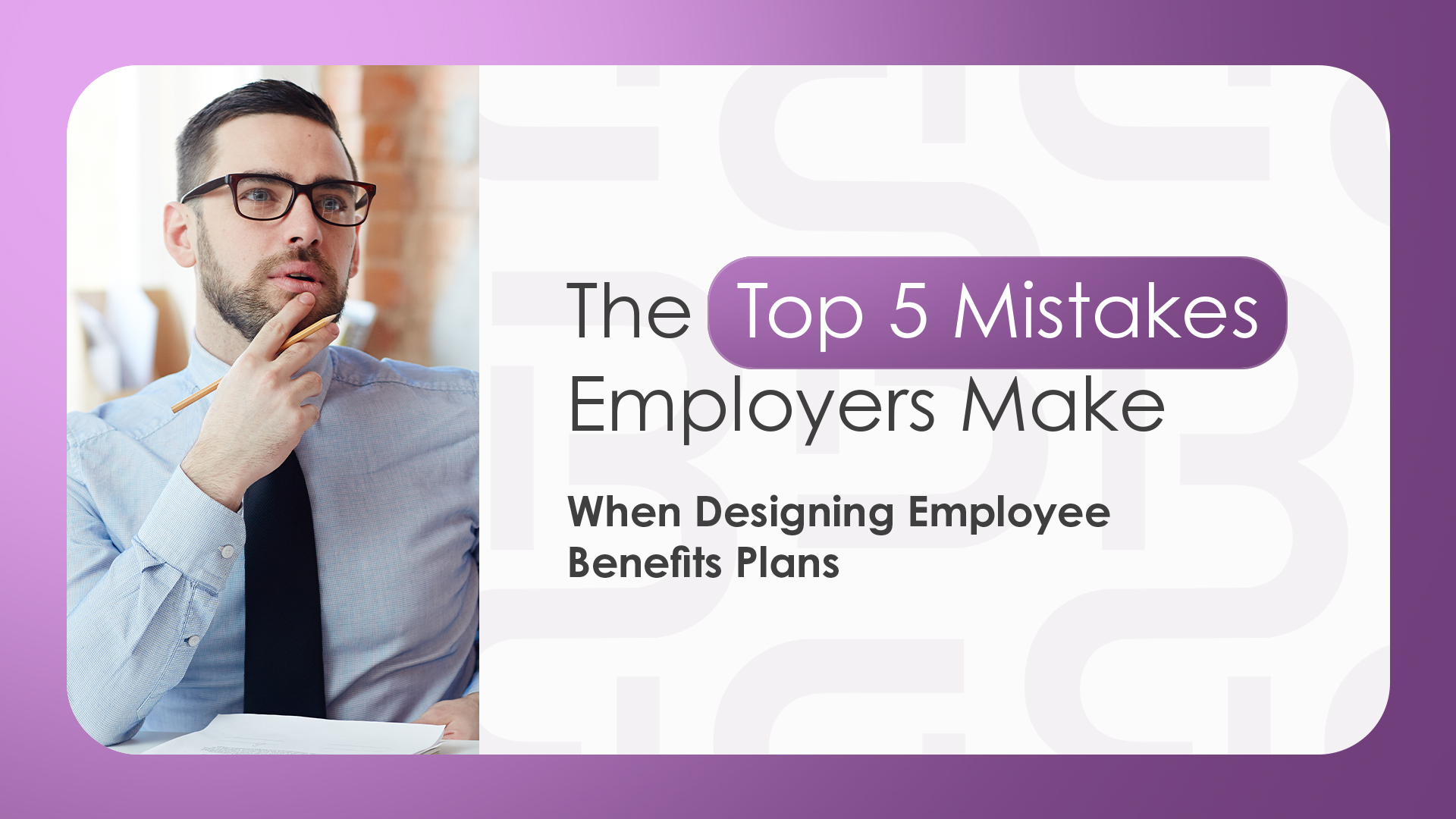An employee benefits plan isn’t just a box to tick during budgeting season—it’s a core pillar of your organization’s value proposition. When done right, benefits improve employee well-being, strengthen retention, and position your company as an employer of choice. But when benefits are poorly designed or misaligned with workforce needs, the result can be costly—for both the business and its people.
Whether you’re building your first plan or refreshing an existing one, here are five common mistakes employers make—and what to do instead.
Treating Benefits Like a One-Size-Fits-All Package
Many employers assume that one standard plan will work for everyone. But today’s workforce is more diverse than ever. Employees span multiple generations, cultural backgrounds, and life stages—and their priorities are just as varied.
Someone starting their career might be more concerned with mental health coverage and loan assistance, while someone with a young family is likely thinking about dependent care and dental. Older employees may prioritize long-term disability coverage or retirement support.
The risk? Offering a flat benefits plan that appeals to no one in particular. Employees feel unseen, under-supported, or forced into irrelevant options.
✅ What to do instead: Build flexibility into your plan design. Modular benefits or cafeteria-style plans allow employees to choose the coverage that fits their life. Supplement your planning with regular employee surveys or feedback tools to stay ahead of changing needs.
Pro Tip: Make sure your plan allows for life events—marriage, divorce, caregiving, etc.—so employees can adjust their coverage as life evolves.
Ignoring the Link Between Benefits and Company Culture
Your benefits program is one of the most visible expressions of your company values. If you promote a culture of wellness, but your plan doesn’t cover therapy or offer realistic time off, there’s a gap. If you speak about inclusion but don’t account for diverse family structures or accessibility, employees will notice.
The risk? A disconnect between what you say and what you offer—which erodes trust.
✅ What to do instead: Design your plan with your values in mind. If you’re committed to equity, ensure your benefits reflect that—such as inclusive parental leave, support for gender-affirming care, or multilingual plan communications. If innovation is a pillar of your culture, stay ahead of emerging offerings (like virtual care or financial wellness tools).
Real-World Example: Companies that back up their DEI statements with inclusive benefit offerings often see stronger employee engagement, especially among underrepresented groups.
Failing to Communicate the Plan Effectively
You could have the most comprehensive coverage available—but if employees don’t understand it, it won’t be used. Poor communication leads to underutilization, confusion, and frustration.
Employees often get a single overview during onboarding, then never hear about their benefits again. Or worse, they only find out what’s not covered during a personal crisis.
The risk? Low perceived value, preventable burnout, and unnecessary claims expenses.
✅ What to do instead: Build a communication plan that’s ongoing, simple, and engaging. Use plain language, short videos, FAQ pages, and interactive sessions. Highlight common scenarios: “What happens if I need therapy?” “How do I access coverage while traveling?” Encourage managers and HR to become benefits champions.
Pro Tip: Don’t just rely on annual enrollment windows—benefits communication should happen year-round.
Overlooking Cost Sustainability and Plan Performance
Benefits plans aren’t set-and-forget. Costs evolve, markets shift, and usage patterns change. Yet many employers let their plans sit untouched—until a renewal brings an unexpected rate hike or usage spike.
Without regular oversight, plans become bloated with unnecessary add-ons or remain outdated while costs climb.
The risk? Budget overruns, inefficient design, and poor ROI.
✅ What to do instead: Monitor plan performance regularly. This includes reviewing claims data, identifying underused components, and comparing your plan against industry benchmarks. Work with an advisor who can help renegotiate rates, audit administrative fees, and identify cost-containment strategies that don’t compromise value.
Designing in a Vacuum—Without Employee Input
It’s easy to assume leadership knows what employees want—but assumptions can lead to costly mismatches.
Executives might overinvest in flashy perks while employees quietly wish for better dental coverage. Or an expensive wellness program may go unused if it doesn’t match how employees actually engage with health resources.
The risk? Wasted investment, disengagement, and low satisfaction.
✅ What to do instead: Involve employees in the design process. This doesn’t have to be complicated—anonymous surveys, town halls, or a small focus group can go a long way. Ask employees what they value, what they use, and what they wish they had. Then reflect that feedback in your offering.
Pro Tip: When employees feel heard, they’re more likely to engage with the plan—and more likely to stay with your organization.
Beyond the Basics: Other Pitfalls to Avoid
While the top five are the most common, here are a few more red flags to watch for:
Neglecting compliance: Ensure your plan meets all federal/provincial guidelines, especially around leaves, tax treatment, and insurance coverage.
Overcomplicating the process: Benefits shouldn’t require a legal degree to understand. Keep access and claims as simple as possible.
Lack of onboarding support: New employees should receive a benefits walkthrough early on—not buried in a dense HR packet.
Conclusion: Build Smarter, Not Just Bigger
An employee benefits plan should work for your business and your people. It should reflect who you are as an employer, meet real employee needs, and evolve with your organization.
At Benchmark Benefits, we help organizations design benefits strategies that are informed, inclusive, and sustainable. With over 18 years in the industry and 135+ years of combined consultant experience, we work across sectors and company sizes to deliver customized plans that align with your culture and goals.
We don’t offer cookie-cutter solutions—because your people aren’t cookie-cutter. Whether you need a full redesign, plan audit, or help communicating your offering, our team is here to support you every step of the way.
Want to avoid these mistakes in your next renewal? Let’s talk.









